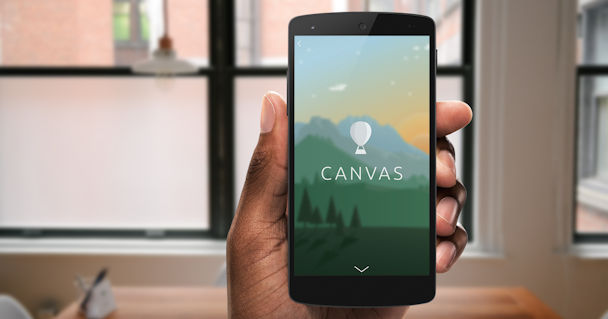The full-screen revolution: Are we seeing a new standard emerging with Facebook’s Canvas, Instagram stories and Snapchat ads?
Snapchat is poised to surpass both Twitter and Pinterest by the end of the year, reaching 150 million users. So the decision to expand its advertising was a smart one, and Snapchat’s Snap Ads Between Stories look like it’s bound to be a huge hit – particularly since there’s a strong focus on user experience and quality creative.

Credit: Facebook
At the same time, Instagram and Facebook have followed suit. Instagram launched “stories,” which seem to have been ripped right out of Snapchat’s playbook. Facebook has introduced its full-page Canvas ads. The similarities between the three products are hard to ignore. For starters, all three social media giants are offering brands a full mobile screen to tell their stories. This is a definitive shift away from both tiny in-app banners, and (more significantly) from the native ad movement. These new ad units give brands a lot more flexibility creatively, offering opportunities for a level of narrative that’s been difficult to achieve cross-platforms, until now. Additionally, Facebook has begun adding full screen vertical videos to the newsfeed, with marketers eagerly embracing them, not to mention the large canvas that Instagram stories offer.
So, what’s happening here? Are we seeing a turn of the tide, an acknowledgement that brand advertising actually needs more real estate? Are we learning that maybe native and in-feed aren’t the best paths for brands? And is this the beginning of an emerging standard for cross-platform, digital brand advertising?
Limited Scalable Options for Brands
For the last three or four years, native was the talk of the industry. With banner blindness at an all-time high and ad blocking on the rise, creating ads that looked, and behaved, like editorial content seemed like a smart idea. For many brands, native ads represented an effective way to reach audiences, but generally at the expense of real estate and visual creativity. And while some premium publishers support native, many don’t -- and that limits the audiences brands can reach with their messages.
At the same time, in-feed ads on Facebook and Twitter have proven to be a great option for brands seeking to reach targeted audiences, in a cost-effective way, across screens. However, with few format options, brands have had limited space to tell their stories.
On the other side of the spectrum, newer mobile ad units offered brands some real estate for creativity, but failed to tap into the full capabilities of mobile. Furthermore, these large-format ads have not always succeeded in winning over users - which often has more to do with how they’re served.
New Opportunity
These new ad formats, from three of the biggest social platforms, could solve a nagging problem for many brands. Not only do they offer the opportunity to create beautiful, engaging advertisements, they also offer incredible reach and targeting. In the case of Snapchat, advertisers receive a bonus by gaining access to the hard-to-reach millennial demographic via a native-type format that allows a lot of room for creativity. Facebook and Instagram have the added advantage of allowing users to “like” and “follow” advertisers, giving brands a way to build ongoing relationships with consumers.
Despite these differences, the similarities between the ad formats are hard to miss. They’re all mobile-only, vertical, full screen, interactive and rich. They’re all beautiful, and clearly geared to brand advertisers who have been craving that bigger canvas to dazzle mobile audiences. And they’re all served in-stream, in-between content or via user action. All are ways that are polite towards the user experience, which may mean that advertisers will have the opportunity to “surprise and delight” at the right moments, in the right context, with their branded experiences.
So one has to wonder: is this the first step toward a new standard - big, beautiful and interactive mobile ads? No one has taken the steps yet to formalize that, but with any luck, it will only be a matter of time. These new formats fill a gap in the marketplace, offering brands the opportunity to engage audiences on mobile screens without sacrificing either scale or creativity. It seems likely that the formats will catch on beyond the big social platforms and extend to other publishers and networks, giving us a full-screen revolution.

